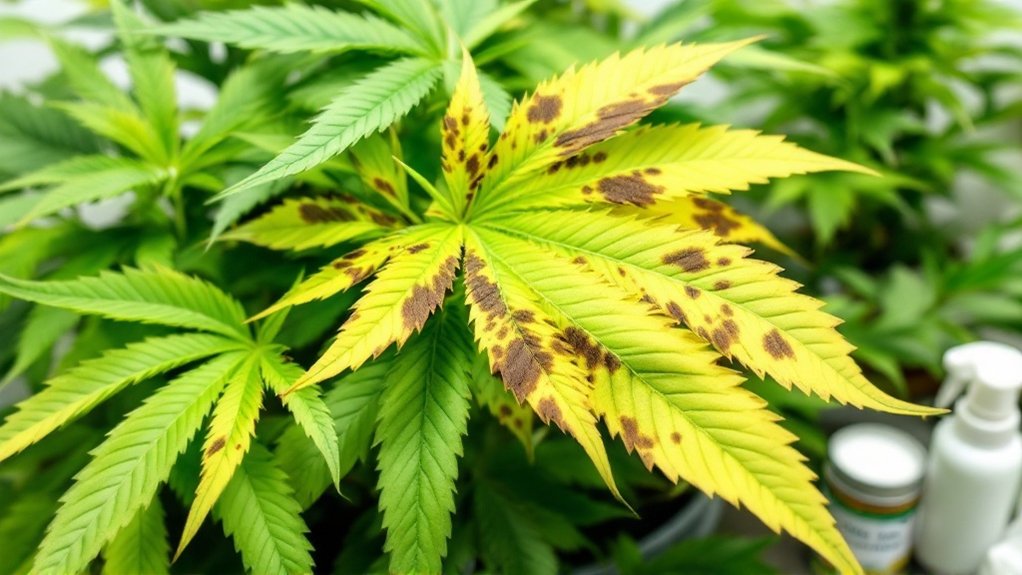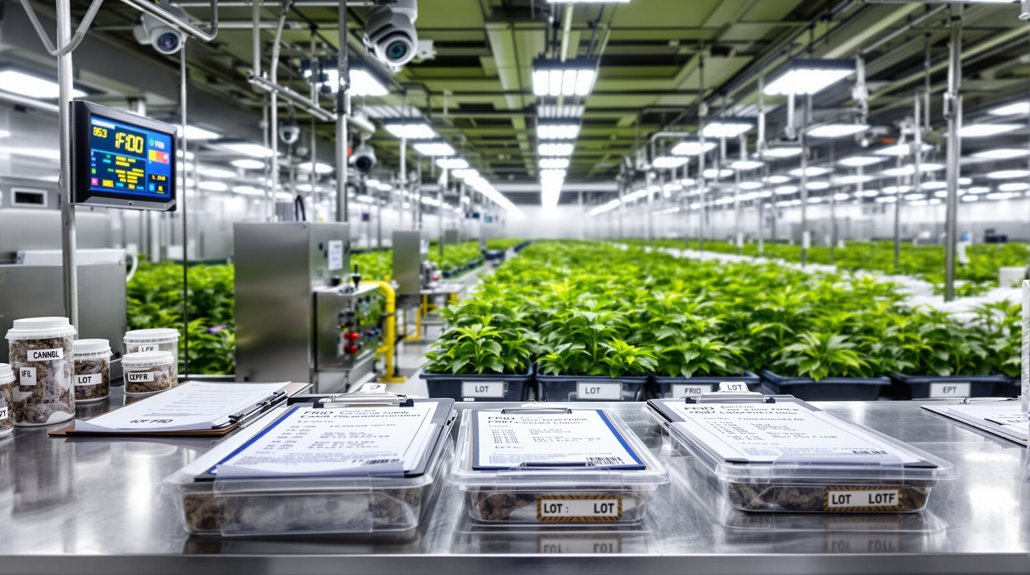The cannabis industry’s rapid expansion continues to reshape compensation structures across all operational levels, creating unprecedented salary benchmarks that reflect the sector’s maturation and market demand. Executive positions now command substantial premiums, while cultivation specialists and retail professionals experience significant wage increases driven by regulatory standardization and consumer growth. These evolving pay scales signal a fundamental shift in how cannabis businesses compete for talent, yet emerging market pressures threaten to disrupt current compensation models in unexpected ways.
Executive Leadership: C-Suite and VP-Level Salary Ranges

As the cannabis industry continues its shift from startup culture to institutional maturity, executive compensation packages have evolved dramatically to reflect the sector’s growing sophistication and competitive landscape.
CEO salaries now range from $150,000 to $750,000 in base pay, with public multi-state operators commanding considerably higher total compensation than private, single-state companies.
COOs and CFOs typically earn $200,000 to $400,000 in base salary, while VP-level positions range from $130,000 to $300,000.
These figures represent substantial year-over-year increases, with some executive roles experiencing 10-20% salary jumps. VP-level roles in Operations, Sales, and Marketing experienced the biggest salary increases this year.
Equity compensation has become standard across C-suite and VP tiers, often featuring stock options, restricted stock units, and performance-based bonuses tied to growth metrics and EBITDA targets. Cannabis companies are increasingly recruiting crossover talent from established industries like consumer packaged goods, pharmaceuticals, and retail, bringing higher salary expectations to the sector.
Cultivation and Production Role Pay Scales
Beyond the boardrooms where executives negotiate million-dollar compensation packages, the cannabis industry’s operational backbone relies on cultivation and production staff whose salaries reflect both the sector’s rapid growth and the specialized skills required for successful cannabis operations.
Entry-level cultivation technicians typically earn $40,000–$50,000 annually, while experienced master growers command $90,000–$120,000 or more. California’s grower salaries demonstrate this range, with the 25th–75th percentile spanning $54,300 to $95,700 annually.
Production roles vary greatly by specialization. Trimmers earn approximately $35,000–$45,000 yearly, while extraction technicians receive $40,000–$70,000. Quality assurance positions command $50,000–$90,000, reflecting the industry’s stringent regulatory requirements. However, employee satisfaction with compensation remains challenging, as only 38% of workers feel they are paid fairly across cannabis operations.
Regional variations remain substantial, with newer legalized markets offering higher starting salaries due to limited local talent availability. The industry’s competitiveness has intensified as established companies increasingly seek candidates with formal cannabis-specific training rather than relying solely on passion or informal experience.
Directors of Cultivation and other executive cultivation positions represent the highest earning potential in the production sector, with top positions earning well over $200,000 annually in larger operations.
Retail and Dispensary Staff Compensation Trends

Three quarters of cannabis industry employees work in retail and dispensary operations, making compensation trends in these customer-facing roles a critical indicator of the sector’s overall employment health.
Budtender wages have increased dramatically, rising over 60% since 2010 from $8-$12 per hour to current ranges of $15-$22 hourly, translating to $31,000-$45,000 annually. Dispensary managers earn between $50,000-$90,000 in mature markets, while assistant managers average $62,300 yearly. Many dispensaries offer employee discounts of up to 50% off products as part of their benefits package.
Cannabis retail compensation has surged dramatically, with budtender wages jumping over 60% since 2010 while management roles command substantial salaries.
Regional variations greatly impact compensation levels, with California and Oregon offering higher salaries due to cost of living factors. Emerging medical markets like Alabama provide lower entry-level pay at $12-$15 per hour.
Performance-based incentives, including sales bonuses, customer satisfaction metrics, and tip income, supplement base wages substantially in high-traffic locations. Security personnel at dispensaries earn between $35,000-$55,000 annually while monitoring surveillance systems and managing customer entry points. Well-defined staff roles ensure operational efficiency during both routine business hours and high-volume sales periods.
Benefits Packages and Work-Life Perks
While competitive salaries attract talent to cannabis companies, extensive benefits packages have emerged as the decisive factor in recruitment and retention across the industry.
Inclusive health insurance covering medical, dental, and vision services addresses the demanding nature of cannabis work environments, while Health Savings Accounts and Individual Coverage Health Reimbursement Arrangements provide alternatives where traditional plans face regulatory challenges.
Retirement benefits, including 401(k) plans with matching contributions and profit-sharing arrangements, offer long-term security despite 280E tax limitations. Many cannabis employees currently lack access to retirement benefits, creating significant opportunities for companies to differentiate themselves through comprehensive retirement planning.
Flexible work arrangements accommodate diverse scheduling needs across retail, production, and cultivation roles, supporting work-life balance through compressed workweeks and hybrid options for administrative staff.
Professional development opportunities, including tuition reimbursement and cannabis certifications, enable career advancement while wellness programs reduce absenteeism by up to 20%. Enhanced employee retention reduces hiring and training costs while ensuring operational consistency across cannabis operations.
Market Outlook and Salary Growth Projections
As the cannabis industry enters 2025, market expansion continues to drive unprecedented salary growth opportunities across professional roles, with the U.S. legal cannabis market projected to reach $45.3 billion this year, representing a substantial increase from $33.6 billion in 2023.
The compound annual growth rate of 11-12% through 2030 signals sustained compensation growth potential for cannabis professionals.
With double-digit annual growth projected through 2030, cannabis professionals can expect sustained upward pressure on compensation packages.
However, salary trajectories face mixed pressures. Price compression has contributed to industry-wide salary contractions of 3-7%, while inflation increases operational costs.
Larger multi-state operators typically offer higher compensation due to scale advantages and vertical integration capabilities.
The sector’s contribution of $123.6 billion to the U.S. economy in 2025, combined with over 440,000 full-time jobs, establishes strong fundamentals for long-term salary growth, particularly in emerging markets like Minnesota and Nebraska. Europe presents promising employment opportunities with its steady growth rate of 12-15% annually, particularly in Germany, UK, and Spain. Cannabis beverages represent a rapidly growing product category with sales increasing 79-112% year-over-year in key markets. California continues to dominate employment opportunities with potential to support up to 133,000 cannabis jobs, making it the most significant market for cannabis professionals seeking competitive compensation packages.








